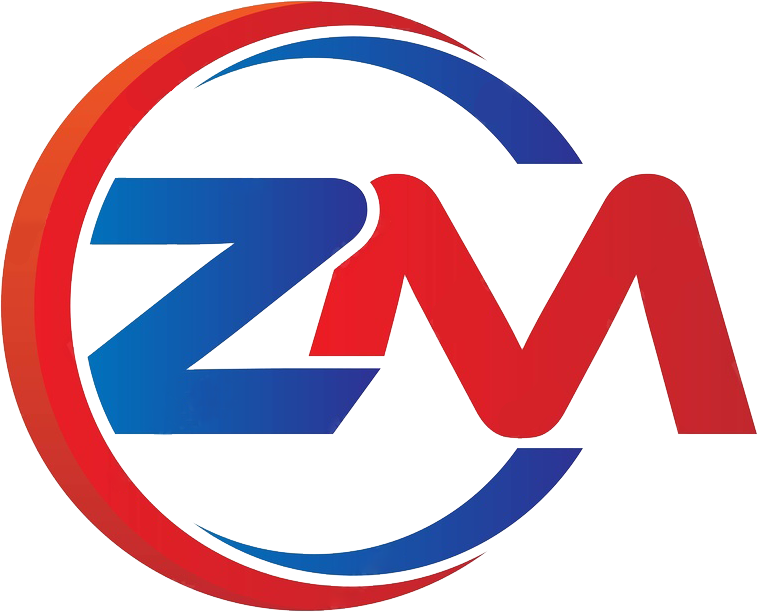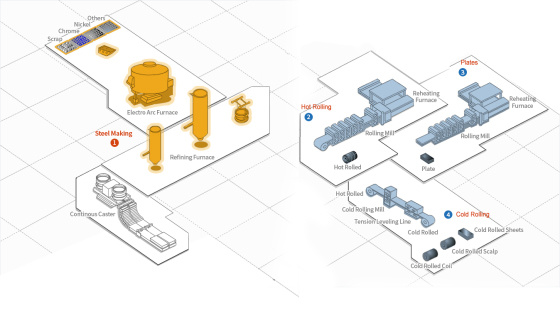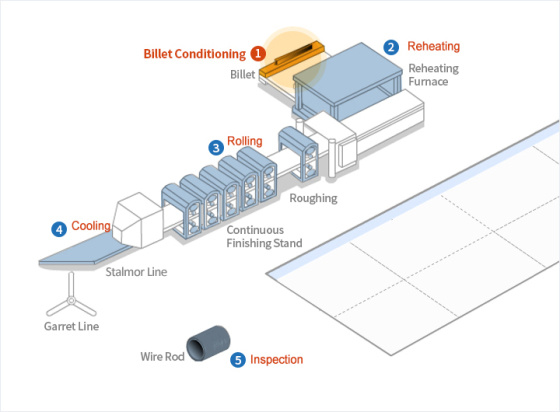
MANUFACTURING
Zhongmiao
Manufacturing Process
 Stainless SteelStainless Steel
Stainless SteelStainless Steel1. Steel Making: Steelmaking has the greatest impact on the quality and cost of steel products. We has state-of-the-art AOD, VOD and continuous casting facilities..
2. Hot Rolling: Slabs made in the steelmaking plant are rolled into black coils of highly refined thickness and shape before being made into white coils to the needs of customers through heat treatment, pickling and finishing in the annealing and pickling plant. White coils so produced are used for cold rolling, pipes and sheets.
3. Plates: Slabs produced at the steelmaking plant undergo rolling, heat-treatment and a pickling process, which are then cut into sizes as ordered and delivered to the customer. Thick plates are used by the heavy chemical industries that require corrosion resistance, such as petrochemicals, power plant facilities, paper manufacturing and special shipbuilding.
4.Cold Rolling: JIUZHOU is equipped with 20 high cluster mills, bright annealing line, TLL (Tension Leveling Line), AFC (Automatic Flatness Control), AGC (Automatic Gauge Control), which enable the production of cold rolled products of 0.1-3.0mm in thickness and up to 1580mm in width in various shapes and surface treatment.More Content Steel PlateSteel Plate
Steel PlateSteel Plate1. Rolling: The 4-high reversible finishing mill with the maximum load of 7000 tons minimizes internal defects even inly thick plates. Automatic gauge control and shape control systems can reduce not only the thickness deviation of plates but also improve the flatness.
2. Cooling: The cooling system enables the production of high strength steel without heat treatment through rolling and accelerated cooling. Using the mist cooling method with suction type, the system has a high cooling capacity and is able to maintain a uniform temperature gradient in the widthwise direction. This leads to a reduction of plate quality deviation.
3. Hot Leveling: The hot leveler is used to make superior quality flat plates by eliminating residual stress left on rolled plates.
4. Slitting: After passing through the cooler, the plates undergo a dimensional accuracy inspection and then cut into appropriate width and length according to plate grade and thickness using either mechanical shearing machine or flame planner. To obtain a higher degree of dimensional accuracy in products, production conditions are determined by such factors as the air knife gap and the nozzle size of the gas torch.
5. Heat Treatment: To attain the plate structure demanded by customers, plates undergo heat treatment after having the scale removed by shot blasters. The heat treating facilities are of a non-oxidizing radiation tube type, which produces scale-free heat-treated plates.
6. Ultrasonic Tester Checks: The ultrasonic tester checks for blow holes, pipes, and laminations and other internal defects. This test is performed to guarantee the internal quality of plates demanded by customers.More Content Wire RodWire Rod
Wire RodWire Rod1. Billet Conditioning: This process is intended for checking the surface quality of billet and removing any defects. Shot blast is used to remove any scale from the surface. Magnet particle testing and visual inspection are also used to identify any defects which must be removed using a grinder. Ultrasonic testing and dimension and geometry checking are also applied as part of the internal quality assurance process.
2. Reheating: The temperature within the furnace and the duration of reheating depend on where the product will be used. To avoid decarburization, which can affect the surface quality of the product, a billet is pre-heated sufficiently at a low temperature before being rolled within the reheating furnace. For this purpose, the fuel and air ratio are strictly controlled.
3. Rolling: The temperature, draft and speed of deformation with which the product is rolled are controlled to meet customer requirements for material features. Further measures to ensure the surface quality include the adjustment of roll roughness and gap, detection of any cracks and dimension correction.
4. Cooling: Coiling temperature at the laying head, the air flow and movement speed of the blower on the cooling bed and the cooling speed of the insulation cover are controlled to ensure that the product has the features required for each application. High carbon steel Wire rods are subject to fast cooling to achieve the microstructure required for successful drawing while low carbon steel is subject to slow cooling to ensure that the product provides the softness required for the customer to eliminate an annealing process.
5. Inspection: Samples are taken from the front and rear edges of the product after rolling and cooling for testing to identify any defects in the dimension or surface or material integrity. Packaging and tagging are also inspected according to customer requirements prior to shipping.More Content

Leave A Message
If you are interested in our products and want to know more details, please leave a message here, we will reply you as soon as we can.


